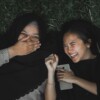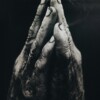I am the elephant in the room. Everywhere I go, people are unintentionally drawn to me. Or rather, people are drawn to a part of me. You see, I was born without my right forearm and hand due to Amniotic Band Syndrome (ABS). I used to wear a prosthetic arm, but due to some physical and psychological factors I was dealing with roughly twenty years ago or so, I stopped wearing it. So, everywhere I go, I am the unintended focal point of curiosity, and in some cases, fear and disgust. Oh, the stories I could tell.
And, I’m not alone. According to the Centers for Disease Control’s (2020) current statistics, one in four adults, that’s approximately 61 million Americans, have a pathologically diagnosed and officially classified disability.1 Research on undergraduates has indicated that disabled students experience exclusion and segregation throughout their college experience,2 and a recent detailed student narrative study yielded that the disabled student community works harder to “overcome physical, attitudinal, social, cultural, and political barriers”3
So, walking into my Intro to Public Relations class on day one, with new students who have never met me before, I immediately create the dynamic of what I call, “the internal social swirl.” What happened? Was she born that way or did she have an accident? I want to know but I don’t want to be inappropriate and ask. Is she going to be weird? I’m starring at her arm because I’m truly curious, but I don’t want to be rude or disrespectful, etc.
My class goes into an internal tailspin that almost paralyzes them from remembering basic social graces in general. And it’s not because they are uneducated, uninformed, or not up-to-date. My students are absolutely wonderful human beings. It’s because something completely different has entered their world and they don’t know how to be in that space.
The elephant has walked into the room, and no one knows what do to. But I do. I flip the elephant on its back and make it known. I share my journey.
I tell my class what happened, how amniotic bands came loose from the uterine wall and wrapped around my developing arm, cutting off the circulation and growth to that part of my body. I share with them that I was teased, bullied, made fun of all of it from the time I first met other kids in preschool until . . . now, as a gown adult. I have always felt the stinging observation from others that I was less than. In fact, the moral model of disability dictates that the disabled individual caused their disability due to a moral failing of some kind, the medical model explains disability as caused by poor health habits, genetics or behavior, and the social model claims that the disabled individual is an effect of the social phenomenon of environmental failure.4 In all three, disability aligns with a failure of some kind.
I explain to them that in my 20s, the physical pain of wearing the prosthetic arm was just becoming too much to bear and I realized that I was only wearing the arm a few hours a day to look normal.
I tell them that it was there in that moment that God met me and convicted me through the scripture within Psalm 139. As my student are listening to me, I explain how that psalm impacted me in profound, identity-giving, burden-releasing ways—that I was made intentionally, on purpose, uniquely. I share that while it’s been hard being so visibly vulnerable and different, living out God’s call on my life to be bold with the way He made me has provided my testimony to share with others.
I share that when David wrote “You have searched me, Lord, and you know me,” I just stopped at “know.” God knows me, He “knit me together in my mother’s womb” after seeing “my unformed body”—he saw that the amniotic bands were wrapping around my arm.
And he let them be.
God wanted me to be this way. And yet, “I am fearfully and wonderfully made.”5 The two concepts must be linked—I was born with one arm, and I am something good. Something that others perceive as a failure, God sees as beautiful.
And, suddenly, in my eerily quiet Intro to PR class, I’m known. The elephant has lost its captivation. I have become human. I have become relatable. Not because I have one arm, because really who could relate to that? No, I was relatable because I have struggled with fitting in, belonging, being content with how I look, being judged. I have been marginalized, felt ostracized, and have been left wondering if I brought any value at all.
And they have, too.
My students have felt and thought every one of those things within the context of their own lives, at some point and to some degree. They have grappled with self-esteem, wondered what God’s plan for them was, and have felt the silence of being alone within their own self-talk of unworthiness. What I was sharing, they understood because they too, have traveled down the same path.
The college years, specifically the first or freshman year, mark undergraduate students’ transition period of independence and development. Depression, mental disorders, and mismanagement of health are widespread among first-year students and continues into their remaining university years.6 In fact, according to Jessica Bryant and Lyss Welding of BestColleges.com, in 2022, 77% of college students experienced psychological distress, 35% were diagnosed with anxiety, 27% were diagnosed with depression, and in 2021, 28% of students said they felt isolated from others.7
A few nod their heads, some are keeping eye contact with me; others are just slightly teary-eyed. Many are thinking, reflecting, and understanding. They know. They get it.
Twenty minutes have now passed in my Intro to PR class. I begin the lecture and we have a great class together. At the beginning of class I walked in as an elephant no one knew what to do with. At the end of class, I walk out with them as a fellow (one-armed) human being.
Footnotes
- Centers for Disease Control, “Disability and Health Overview, Disability and Health Promotion, las modified September 16, 2020, https://www.cdc.gov/ncbddd/disabilityandhealth/disability.html.
- Jeanne L. Higbee, Rachel E. Katz, and Jennifer L. Schultz, J. L. “Disability in Higher Education: Redefining Mainstreaming,” Journal of Diversity Management 5, no. 2 (2010): 7–16, https://doi.org/10.19030/jdm.v5i2.806.
- Laurence Hopkins, “The Path of Least Resistance: A Voice-Relational Analysis of Disabled students’ Experiences of Discrimination in English Universities,” International Journal of Inclusive Education 15, no. 7 (2009): 711–727, https://doi.org/10.1080/13603110903317684.
- Rhoda Olkin, “Could You Hold the Door for Me? Including Disability in Diversity,” Cultural Diversity and Ethnic Minority Psychology 8, no. 2 (2002): 130–137, https://doi.org/10.1037/1099-9809.8.2.130.
- Psalm 139, NIV.
- Bernadette Melnyk, Stephanie Kelly, Diana Jacobson, Kimberly Arcoleo, and Gabriel Shaibi, “Improving Physical Activity, Mental Health Outcomes, and Academic Retention in College Students with Freshman 5 to Thrive: COPE/Healthy Lifestyles,” Journal of the American Association of Nurse Practitioners 26, no. 6 (2012): 314–322, https://doi.org/10.1002/2327-6924.12037.
- Jessica Bryant, and Lyss Welding, “College Student Mental Health Statistics,” Best Colleges, February 15, 2023, https://www.bestcolleges.com/research/college-student-mental-health-statistics/#:~:text=Almost%209%20in%2010%20students,they%20affect%20their%20mental%20health.&text=In%202021%2C%2028%25%20of%20students,their%20cis%20and%20straight%20peers.
























Anna, thank you for your transparency! I can only imagine how much this frees up your students to share their own struggles. So wonderful to have you as a colleague. Love the thought you leave us with: “At the beginning of class I walked in as an elephant no one knew what to do with. At the end of class, I walk out with them as a fellow (one-armed) human being.”
Excellent stuff. What you’re accomplishing through an honest and vulnerable discussion of your disability is something we can all learn, I think. I have found that time spent connecting with students in human ways, and *helping them to connect with one another,* is some of the most valuable time I have teaching in the classroom. All the rest – the theories, concepts, text analysis, debate – is enhanced by the creation of a safe(r) more welcoming learning community. Thanks for writing this piece.
Anna, thank you for sharing about how God saw you being formed and the amniotic bands surrounding your arm and “he let them be”. So many people think that disability needs to be “fixed” so that one can be “normal”. There are so many differents ways and motivations for defining “normal”. Perhaps we should define “normal” as what God “let be”. Your testimony is powerful.